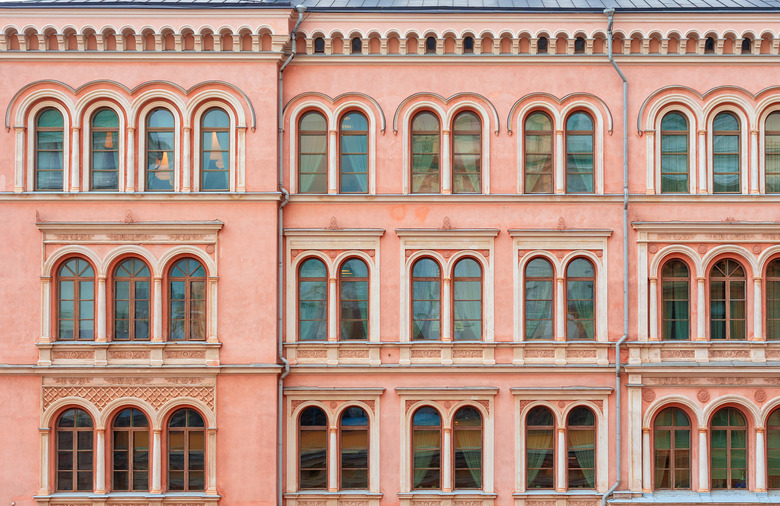Could "Living Concrete" Be The Key To Cleaner Construction?
Where are you right now? If you're inside, what kind of building is it? A tall skyscraper with buzzing fluorescent lights? An old brick school where the water pipes freeze every winter? A library that's freezing from A/C in the summer and too hot from horrible heating in the winter? A house that has your dad constantly complaining about the poor insulation?
While better than no roof over your head at all, these buildings are super inefficient. They use materials that contribute to the climate crisis, require us to make costly repairs, cut down on the productivity of the people who work in those buildings – and take up valuable resources that are becoming even more scarce.
Something about the way we build has to change. That's why a team of researchers came up with a material they're likening to Frankenstein. It's "living concrete30391-1)," and it's designed to be just as tough and durable as the concrete you see everywhere.
In addition to being less harsh on the planet than cement, this concrete also gives back to the planet – made from minerals deposited from cyanobacteria, it captures carbon and can potentially grow and reproduce in order to fix itself as a building material.
Researchers hope it's just the beginning for these types of biomaterials, which could even purify the air and heal themselves in the process. Widespread use could be revolutionary for the construction industry.
What’s So Bad About Construction?
What's So Bad About Construction?
A lot. Everything that goes into creating new buildings – the process of making the materials, transporting them around the world, then the construction itself – combined with the resources that the structures need to run, like electricity, are responsible for 39% of the energy-related carbon emissions.
One of the reasons that researchers targeted concrete for a green makeover is that the process required to make cement is incredibly un-green, accounting for about 8% of global carbon emissions. That's why the prospect of a material like "living concrete" is so tantalizing: It can cut back on emissions and make spaces more sustainable and efficient in the process.
That innovative ability is going to be even more important going forward. The population of the world is rising steadily, and people are moving away from more rural areas and settling in cities. By 2050, 68% of the world's population could live in cities, compared to the 55% of people who do now. That means more people are going to need urban housing and public transportation, as the climate crisis makes resources even scarcer.
But Some Builders Are On It…
But Some Builders Are On It...
Many people in the construction industry understand the dire need to create more sustainable and efficient buildings. In 2005, less than 5% of construction in the U.S. was green. Now, it's up to 38%, and growing.
In fact, the World Green Building Council has an ambitious plan to slash building and infrastructure carbon emissions by 2030, and even get to 100% net zero emissions by 2050. Along with developing materials like living concrete, the WorldGBC is calling for companies to turn to resources like solar and wind power, renovate rather than reconstruct when possible and to use local materials.
They also want researchers to keep working on creative solutions. After all, wouldn't it be cool if one day our buildings weren't so stuffy and antiquated? Instead of having to go outside to get some fresh air, the building could provide us with the air and energy we need to power through our day. Living buildings could work to fix themselves, add to the communities around them rather than simply take resources, and really come alive in the process, both literally and figuratively.
There are ways you can help make that dream a reality. Support politicians who want a Green New Deal – these types of changes to the construction industry, all of which create jobs, are a huge part of many of those deals. Look into getting a green job for yourself one day, since many at least partly involve making cities and infrastructure more sustainable. You can also find out how you can get involved with organizations like the Rocky Mountain Institute, Fridays For Future or Green Infrastructure Coalition, which work to strengthen their communities with sustainable building, hold leaders accountable for their actions and promote sustainable decision-making in all kinds of industries.
Cite This Article
MLA
Dragani, Rachelle. "Could "Living Concrete" Be The Key To Cleaner Construction?" sciencing.com, https://www.sciencing.com/what-is-living-concrete-13724161/. 27 January 2020.
APA
Dragani, Rachelle. (2020, January 27). Could "Living Concrete" Be The Key To Cleaner Construction?. sciencing.com. Retrieved from https://www.sciencing.com/what-is-living-concrete-13724161/
Chicago
Dragani, Rachelle. Could "Living Concrete" Be The Key To Cleaner Construction? last modified March 24, 2022. https://www.sciencing.com/what-is-living-concrete-13724161/
